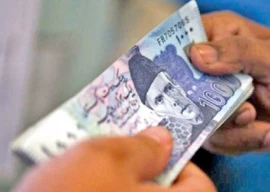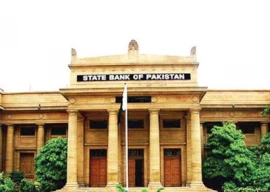
Exports declined in a broad range of sectors and the report called for proactive and concerted efforts to arrest the trend. “This is critical to improving long-term fundamentals of the economy and reducing Pakistan’s external vulnerability.”
The report stated that higher imports to improve power supply and servicing of external debt had increased the economy’s foreign exchange needs.
Exports dropped 8% in 2014-15 and 12.5% in 2015-16. They fell 9% in the first quarter of FY17. In the quarter, imports grew 10% and fiscal deficit expanded 29%.
The IPR expressed fear in the report that after years of growth, overseas remittances may have begun to decline, though it was too early to confirm that.
After dismal performance of last year, agricultural production has improved somewhat as cotton output grew 18% compared to a 30% decline last year. Other major crops have also recovered.
However, against the growth target of 5.9% for 2016-17, year-on-year large-scale manufacturing grew 2.3% in the first quarter. Production declined in a number of major industries including textiles.
During the quarter, the amount of private-sector credit decreased compared to last year.
Both fiscal and current account deficits worsened in the quarter. Fiscal deficit stood at 1.3% of GDP against the target of 3.8% for the year. Current account deficit was 1.1%, while the yearly target was 1.5% of GDP.
Tax collection by the Federal Board of Revenue and federal government revenues grew 4% and 3% respectively. That came on top of an unprecedented increase of 20% during FY16. Development spending, however, was lower than the first quarter of last year.
The report suggested that quick fixes would not help the growing twin deficits and signs of medium-term external vulnerability.
“They require structural reforms through major policy changes. Without reforms, the economy will continue to perform within a band of low to moderate growth. Public debt will continue to rise as revenues stay well behind needs. Export growth too will remain uncertain.”
According to the report findings, Pakistan must reduce dependence on textiles and apparels in exports and, more importantly, change the strategy from price competition to product differentiation.
The economy’s fundamentals remained uncertain and there was no indication of increase in productivity. In a period of low mark-up, the government had increased short-term debt while reducing long-term borrowing, it said.
Of the factors that increase productivity, according to the report, infrastructure will improve in coming years, largely from the China-Pakistan Economic Corridor. However, there is a need for urgent action to upgrade the skills, improve research and development work as well as governance.
Reducing the social deficit would provide better workers for factory floors, in offices and better entrepreneurs. By not doing so, Pakistan will miss out on a large part of its potential. It will also reduce poverty in the country.
Published in The Express Tribune, December 31st, 2016.
Like Business on Facebook, follow @TribuneBiz on Twitter to stay informed and join in the conversation.































1714129906-0/Clint-Eastwood-(1)1714129906-0-270x192.webp)





COMMENTS
Comments are moderated and generally will be posted if they are on-topic and not abusive.
For more information, please see our Comments FAQ